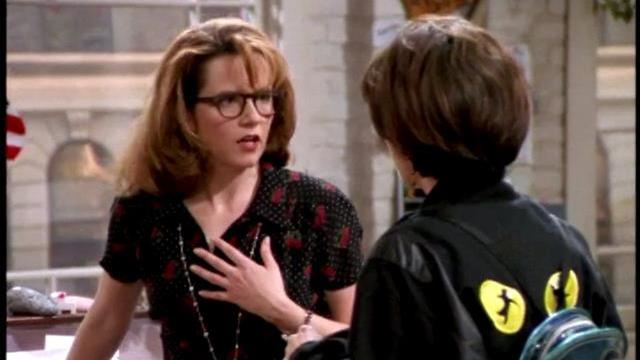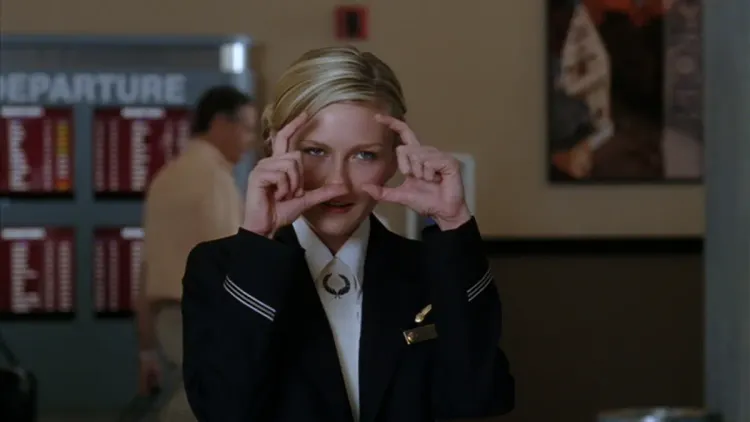Episodes: Shows that aired between Seinfeld and ER, ranked

In the fall of 1993, NBC gambled on Seinfeld. Yes, it had performed impressively well post-Cheers, but with the classic bar-set sitcom (arguably the best traditional sitcom ever made) off the air, it was anybody's guess as to whether audiences would return to the wild weirdness of Seinfeld, then entering its fifth season.
As we now know, of course, they did. The show went from "big hit" (it only landed at 25th in the Nielsens for its fourth season) to "massive hit" (when it landed at third for its fifth), and it became the cornerstone of a new era of NBC dominance, one predicated on lots of shows about quirky white people living in New York City. And yet Seinfeld's "massive hit" era was far shorter for a show of its stature than we'd expect. It left the air in the spring of 1998, giving it just five seasons in the prime spot. It left near the height of its ratings dominance, which is a tricky thing for a show to do. (Even Cheers had slipped a bit in the numbers in its final two seasons.)
In the fall of 1994, Seinfeld would find its perfect match in a show that was even bigger (though it's weirdly forgotten about today): the medical drama ER, which would dominate the ratings charts for much of the rest of the '90s, and wouldn't leave the air until 2009.
Of course, there were other shows that led to NBC's success in this era (like one we'll talk about in just a second), but if you want to be there at the founding of it all, you have to deal with Seinfeld and ER.
The two aired just four TV seasons together, and in that time, NBC scheduled seven shows between them with some degree of regularity, to say nothing of frequent one-offs and one-week tryouts (which I'm not going to rank, because dear God -- just assume that NewsRadio would win). The story of NBC in the '90s is both one of massive success with outside-the-box thinking and then an attempt to protect that success at all costs, which led to increasingly tepid creative material. It's a decade split in two, really.
But we don't care about that. Let's rank those seven shows.
Not ranked: Frasier. You might think, as I did when I started this, that Frasier would be an easy choice for first place. But not so fast! It never technically aired between Seinfeld and ER. It aired between Seinfeld and the last season of LA Law (as well as the four-episode second season of Homicide: Life on the Street, which is still, I believe, the smallest pickup for a broadcast network series ever). Sorry, Frasier. You would have made my life easier. (Have you ever noticed how randomly I italicize or don't italicize show titles in these things? I need a style guide.)
#7: Fired Up (1997): The pinnacle of NBC's "throw something after Seinfeld and hope it sticks" strategy was the 1996-97 season, when it tried three separate shows there. The worst was this justifiably forgotten Sharon Lawrence vehicle that pulled in big numbers for its six-episode first season, then was canceled after nobody cared to follow it to a new timeslot in season two. Leah Remini was the former assistant Lawrence's recently fired character moved in with. Jonathan Banks, of all people, played Lawrence's love interest. It was not very good, but at least it gave us the premise for the Melissa McCarthy movie The Boss, it would seem.
#6: Suddenly Susan (1996): My general sense is that the opinion on this Brooke Shields vehicle has turned around in recent years, possibly because Kathy Griffin has gone on to be entertaining in other arenas. It should not turn around. This is still a stale, hacky sitcom that steals elements from other, much better shows. Somehow, however, it garnered enough of a following to last four seasons, and you'll still come across it in syndication from time to time.
#5: Madmen of the People (1994): It's kind of hard to hold this one against NBC. For one thing, it had Dabney Coleman, who must have seemed like a draw. For another, NBC didn't yet know that ER would become the world-beating success it did become. And to NBC's credit, it very quickly got Madman out of there when it clearly just wasn't working, in favor of our top pick. But this was a stuffy show that maybe could have worked but just didn't. It felt, in some ways, like an attempt to replace Frasier with Frasier (which had moved to Tuesdays), and why wouldn't I just watch Frasier? This is the only show on this list to last just one season.
#4: Veronica's Closet (1997): Seinfeld spent its entire final season paired with this Kirstie Alley vehicle, and of all of the shows made by the Friends creators in an attempt to recapture the spark of that series, this is probably the "best." (It's certainly better than Jessie.) Set in a Victoria's Secret-esque company, Alley plays the kind of blowsy blowhard she played so well, and Kathy Najimy was a lot of fun, too. This is the kind of show Entertainment Weekly would occasionally try to convince its readers was thisclose to clicking, probably because of the solid cast and the generally fine premise. But it never made the leap, and it petered out after three seasons.
#3: Caroline in the City (1995): No joke: I really kind of love Caroline in the City, especially Malcolm Gets in the role of Richard and Lea Thompson as Caroline. It is entirely possible that if I tried to watch this show now, I would realize its crumminess, but at the time, it struck me as perfectly serviceable Friends-lite. The idea of basing a show like this around a comic strip artist wasn't a bad one, and there were some decent character gags, to say nothing of Gets's genuinely funny performance. I'm a little surprised a theater vet like Gets hasn't gotten another shot, but maybe he's still rolling in Caroline in the City money. It made it to four seasons, and you can apparently watch reruns of it on the CBS website. I'm... not going to do that. Better to leave my memories happy ones.
#2: The Naked Truth (1997): Both this and Caroline are "shoulda worked" shows, in that they had generally strong casts and premises that could have been great, but they both proved to be missing... something. In the case of this show, I think it was that the broad, workplace setting was a poor match with Seinfeld, which always seemed to be better suited to shows about neurotic New Yorkers (not that NBC ever left anything in place long enough to find out). The screwball vibe and Tea Leoni lead performance should have made this one much better than it was, but in retrospect, it probably wasn't committed enough to screwball to really become exceptional. The series actually began its life at ABC, where it was canceled after one season, before NBC picked it up. It did well post-Seinfeld, then cratered when it moved elsewhere in season three. So it goes.
#1: Friends (1995): Yes, Friends aired after Seinfeld for all of a few months, and it took a little, promising show that was growing in the ratings and sent it into the stratosphere. I'm a big fan of the scheduling moves NBC undertook throughout the '80s and '90s, because they often made hugely gutsy calls that seemed absolutely obvious in retrospect. Now, moving Friends after Seinfeld for a few months wasn't that risky of a call, but it ended up having a much higher upside than I would bet even NBC thought it would. And once Friends was solidified at 8, NBC had the three pillars of a night that would allow it to throw essentially anything else on the air and get people to watch, an advantage I think it squandered, but what can you do?
Now, as to why NBC didn't have Friends take over the Seinfeld slot like it should have? That I couldn't tell you.
--
Episodes is published at least three times per week, and more if I feel like it. It is mostly about television, except when it's not. Suggest topics for future installments via email or on Twitter. Read more of my work at Vox Dot Com.





Member discussion